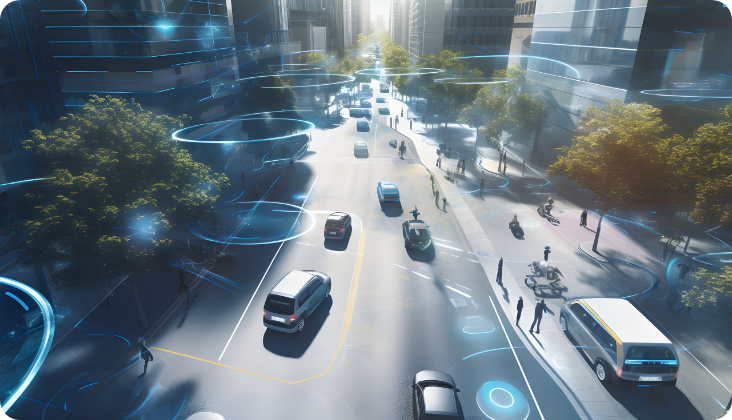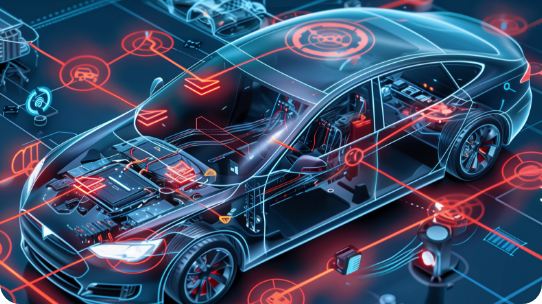- Top
- Turnpoint Media
- Mobility Industry Trends
- The EV Market from the Basics: Current Trends in the World and Japan
モビリティ業界動向
The EV Market from the Basics: Current Trends in the World and Japan
2024.02.22
2025.06.20
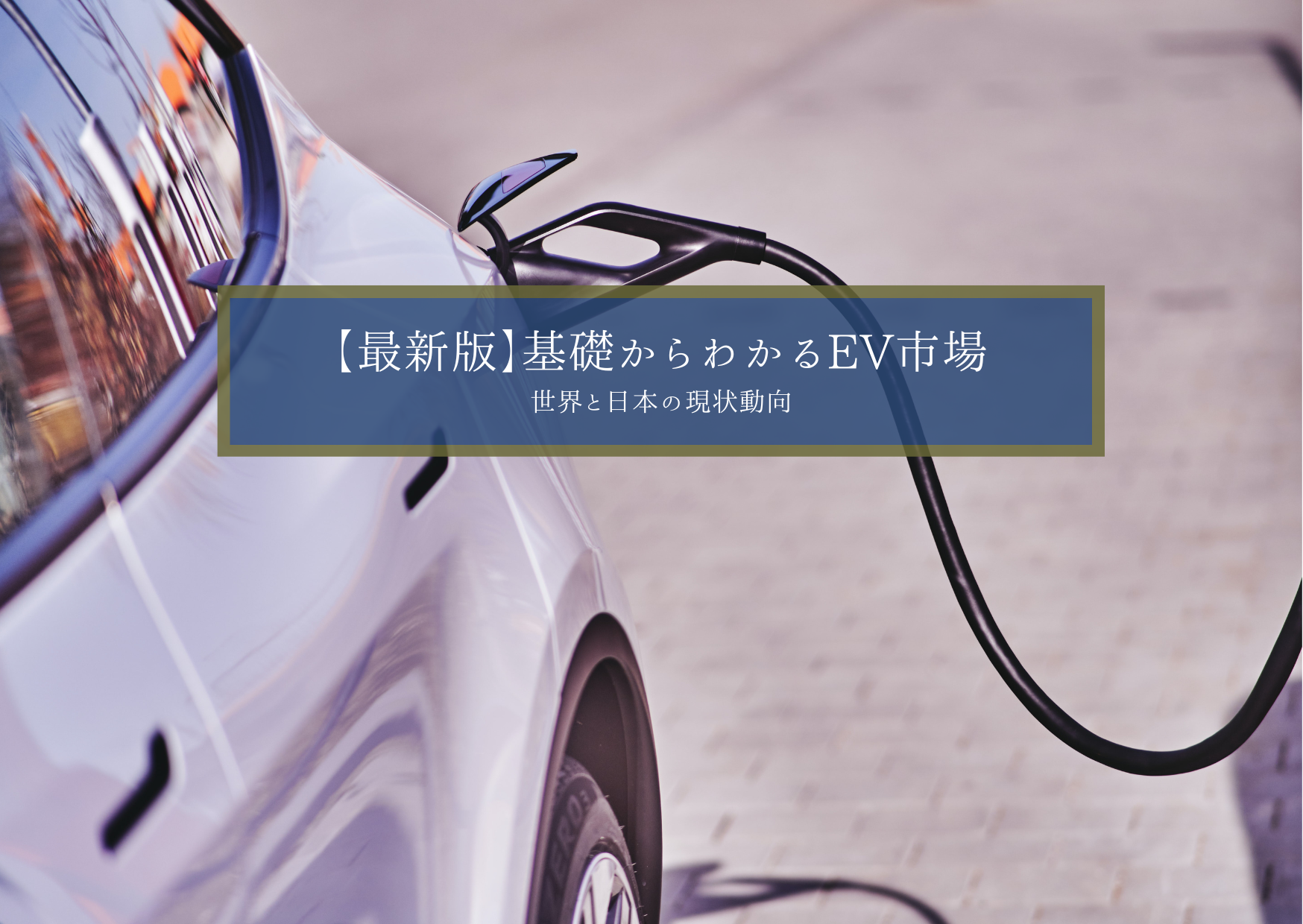
Need help with your job search?
Consultation
- I don't know if there is a job that fits my criteria
- I don't have time to look for jobs.
- I want to start thinking about career planning.
Turnpoint Consulting is a recruitment agency specializing in the automotive and mobility industry. Our industry experts will support you in your career.
Table of Contents
This article focuses on Electricity, one of the CASE Revolution¹s facing the automotive industry, and summarizes the market trends towardelectrification and the current status of electric vehicles worldwide and in Japan, based on data.
It is no exaggeration to say that electric vehicles are the topic that attracts the most attention in the industry, both domestically and internationally, as a means of reducing greenhouse gas emissions and becoming carbon neutral*². However, because of this, a great deal of information is flying around,
It’s hard to get organized to understand what’s going on.”
I am sure that this is the case.
In this article, after reviewing the types and definitions of electric vehicles, we will follow the trends around the world and the situation in Japan with the latest data. Therefore,
- I would like to review the basics as a trend within the automotive industry.
- I want to keep up with the latest trends as a preliminary knowledge before going for an interview.
We hope to respond to this desire.
¹ CASE Revolution = A term coined from the initial letters of Connected, Autonomous/Automated, Shared/Services, and Electric, indicating technological innovations that will significantly change the concept of the automobile.
² Carbon Neutral = A slogan launched by the Japanese government to achieve a decarbonized society with zero carbon dioxide emissions by the year 2050.
Electric vehicles (HV + BEV + PHEV + PHV)
The following electric vehicles are options for reducing CO2 emissions from automobiles toward achieving carbon neutrality. We will compare the features, advantages and disadvantages of each.
(1) HV | Hybrid vehicles
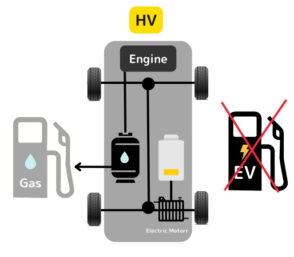
It is equipped with a gasoline engine and an electric motor, with the gasoline engine providing the main power. The electric motor is also driven by charging the energy generated during braking as electricity.
Examples of car models: Prius (TOYOTA) Serena (NISSAN) Fit (HONDA)
・ Benefits: No need for a charging station because of gasoline. Fuel economy is high and engines last longer.
Demerit: Not a fully electric vehicle. Exhaust gas emissions due to the engine.
PHEV | Plug-in Hybrid Vehicle
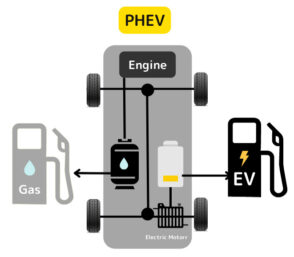
Runs on both electricity and gasoline, less expensive than EVs, virtually equivalent to EVs in daily use, and capable of long-distance driving. Can also run on electricity alone or gasoline alone.
Model example: Prius PEV (TOYOTA)
・ Benefits: Better environmental performance than HVs. Fuel economy is good, and the car can run on electricity alone.
Demerit: High vehicle price.
BEV – Battery EV (Electric Vehicle)
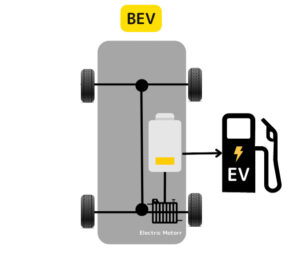
It is powered solely by electricity and is characterized by its environmental friendliness. The battery installed in the vehicle is charged and the vehicle runs on the electricity.
Examples of vehicles: Model S/ X / 3 (TESLA) Leaf (NISSAN) I3 /i4 (BMW) I-PACE (Jaguar)
・ Merit: No CO2 emissions.Compared to FCVs, the charging environment is more convenient as it can be recharged at home, etc. Low running cost.
Demerit: High vehicle price. Relatively short cruising range. Takes time to recharge.
FCV | Fuel Cell Vehicle
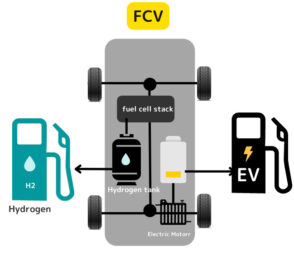
It uses hydrogen in the fuel cell and runs on electricity generated by a chemical reaction with oxygen as energy.
Like EVs, it does not have an engine, but instead has a motor.
Examples of vehicle models: Nesso (HYUNDAI) Mirai (TOYOTA)
・ Merits: Relatively long cruising range. Energy efficiency is high, and the car can be operated efficiently even with low output. Only water vapor is generated during operation, which is good for the environment. Low noise level.
Demerit: Vehicle price is high due to the high cost of fuel cells. Difficult to build infrastructure for hydrogen stations .
Global Electric Vehicle Market
What is the actual market penetration rate of electric vehicles and what are the trends in the industry? In this issue, we will focus on electric vehicles (EV = BEV + PHEV) in particular, and look at the current situation in overseas markets and Japan within those markets, in this order.
Globally, the market continued to grow in 2023, with increasing penetration around the world. 2023 data shows a further increase in EV sales, reaching 13.6 million units. This figure represents a 35% growth compared to 2022.
Vehicle sales and electric vehicle (BEV + PHEV) sales in the global market
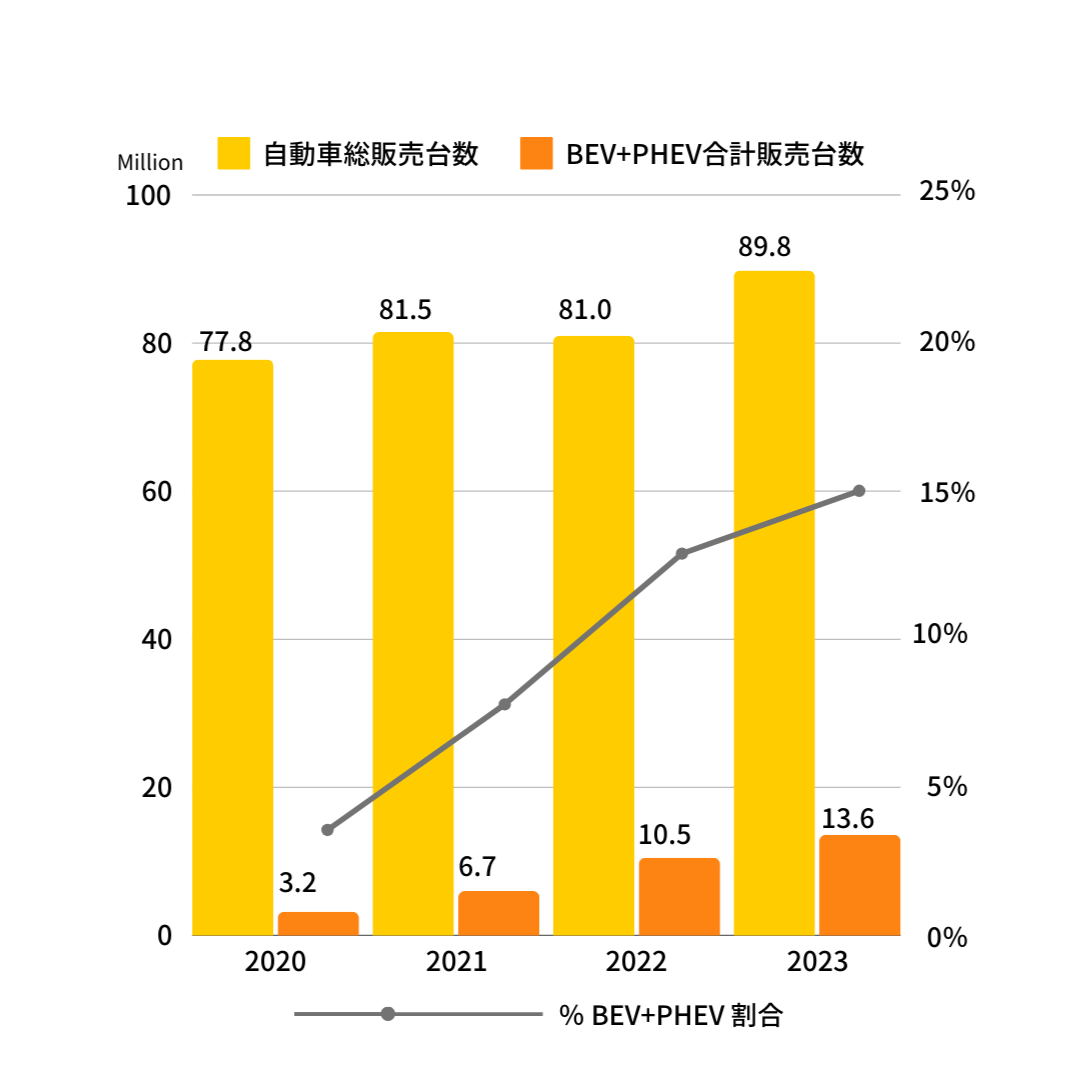
Of particular note is the Chinese market.
It is still fresh in our minds that in 2023 China overtook Japan to become the world’s largest exporter of automobiles, and its growing international presence can be attributed to the growth of the Chinese EV market. In China, the category of NEVs (New Energy Vehicles), which specifically includes BEVs, PHVs, and FCVs, is used, and in 2023, China’s NEV sales exceeded 9.5 million units, up about 38% from the previous year.
The focus on BEVs and PHVs is high, with sales numbers increasing by about 25% and85% growth. Chinese automaker BYD continued its dominant sales growth in 2023, ranking among the “top 10 global automakers in terms of vehicle sales.”
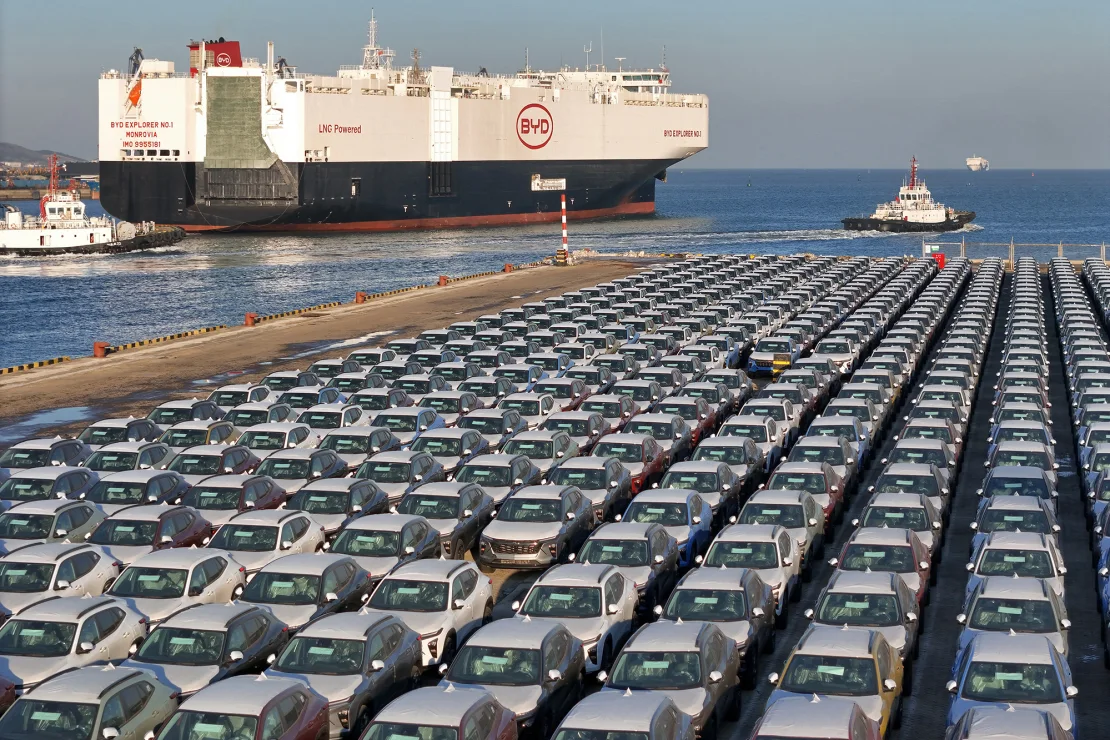
The EV market continues to grow in Europe, especially within the EU, with BEV sales of new vehicles in 2023 up 37% compared to the previous year. Overall new vehicle registrations also grew by about 14%, indicating a significant role in the industry’s growth.
The growth of the EV market within the EU is being driven by a number of factors, including the response to climate change and the growing demand for sustainable mobility. The market is expected to continue to grow, with the market share rate projected to increase from 15% in 2023 to nearly 20% in 2024. We should continue to pay close attention to technological developments and policy drivers.
Let’s also take a look at the U.S. market. According to the latest data, the penetration of EVs in the U.S. has further increased compared to the previous year, with approximately 1.07 million EVs sold in 2023, a 51% increase over the previous year. This shows that interest in EVs is growing even more.
Although the government is offering tax credits and other incentives for EV purchases, the cost of EVs is still higher than that of HVs, and the cost of HVs, including tax credits, is still higher than that of HVs, Although the government offers tax credits and other incentives for EV purchases, the cost of EVs is still relatively higher than that of HVs, and the number of charging spots has not kept pace with the spread of EVs, which seems to be holding back the spread of EVs even further.
Comparison of EV and HV new vehicle sales in the U.S. market
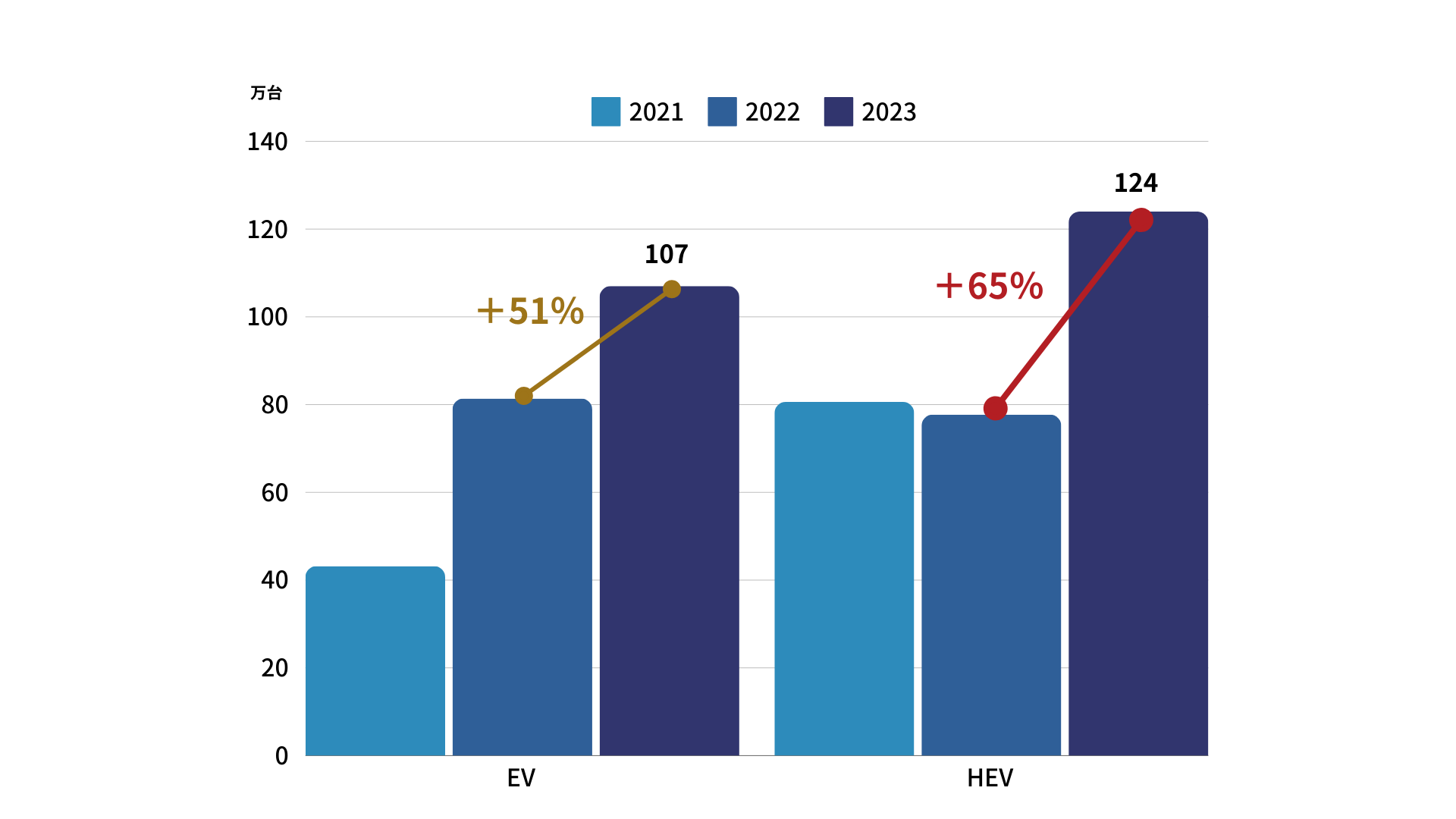
It will be very interesting to see how EVs will spread in the U.S., where major automakers such as Ford and General Motors, as well as electric car maker Tesla, are concentrated, and what policies the manufacturers will adopt. It can be said that HVs are gaining in popularity, but this is because they are more environmentally friendly than gasoline-powered cars, and consumers are highly concerned about environmental friendliness. This may overlap with global trends in the future, so it is important to watch this trend carefully.
The Indian EV market continues to grow steadily, with the number of new domestic EV registrations in 2023 reaching a record high of approximately 1.53 million units, a growth of 50% over the previous year. The introduction of popularization policies by the Indian government, including subsidy benefits, and the development of battery cell production are driving the market expansion.
The EV market is also growing remarkably within ASEAN. Thailand’s EV market has increased its share within the new vehicle sales market by 2.2 times over the previous year. Indonesia’s EV market is also growing on the strength of its market size and resource abundance. It should be noted that Indonesia is the world’s largest nickel producer, and the government is making efforts to produce EV batteries domestically.
In each of these countries, government-led measures are being taken to promote the use of EV batteries, and manufacturers are following suit with policies that take advantage of the strengths of each country, resulting in market expansion.
Trends in the Japanese Electric Vehicle Market
So far, we have reviewed the status of EV penetration in major markets around the world. Before moving on to the current situation in the Japanese market, let us review the goals set by the Japanese government regarding carbon neutrality, as mentioned at the beginning of this article.
- 2035 Achieve 100% electric vehicles in new car sales
- Aiming for virtually zero CO₂ emissions by 2050
As mentioned above, the government is taking the initiative to expand the market for electric vehicles with the aim of achieving carbon neutrality by 2050. For example, measures are being taken to lower the hurdle for consumers to purchase EVs through the government-led “Clean Energy Vehicle Introduction Promotion Subsidy” (CEV subsidy). The government plans to continue these subsidies in the future, which is a clear indication of the government’s positive attitude toward EVs.
As a result, the Japanese EV market continues to grow steadily year after year. However, it is still small compared to other countries in the world.
As in the rest of the world, let’s look at the numbers first: EV (BEV) sales in Japan in 2023 were up 50% from the previous year to about 80,000 units; when combined with PHEVs, the figure is about 140,000 units, a record high.
However, the Japanese EV market remains small compared to other countries. Although its share of the overall market increased over the previous year, the reality is that it still lags behind other countries at approximately 3.5%.
Various factors influence the process in the diffusion of EVs. Although government subsidy programs exist, measures that are closer to the lives of buyers, such as cost reductions through manufacturers’ efforts and the development of charging infrastructure, will be important for the future diffusion of EVs.
Comparison of vehicle sales and electric vehicle (BEV + PHEV) sales in Japan
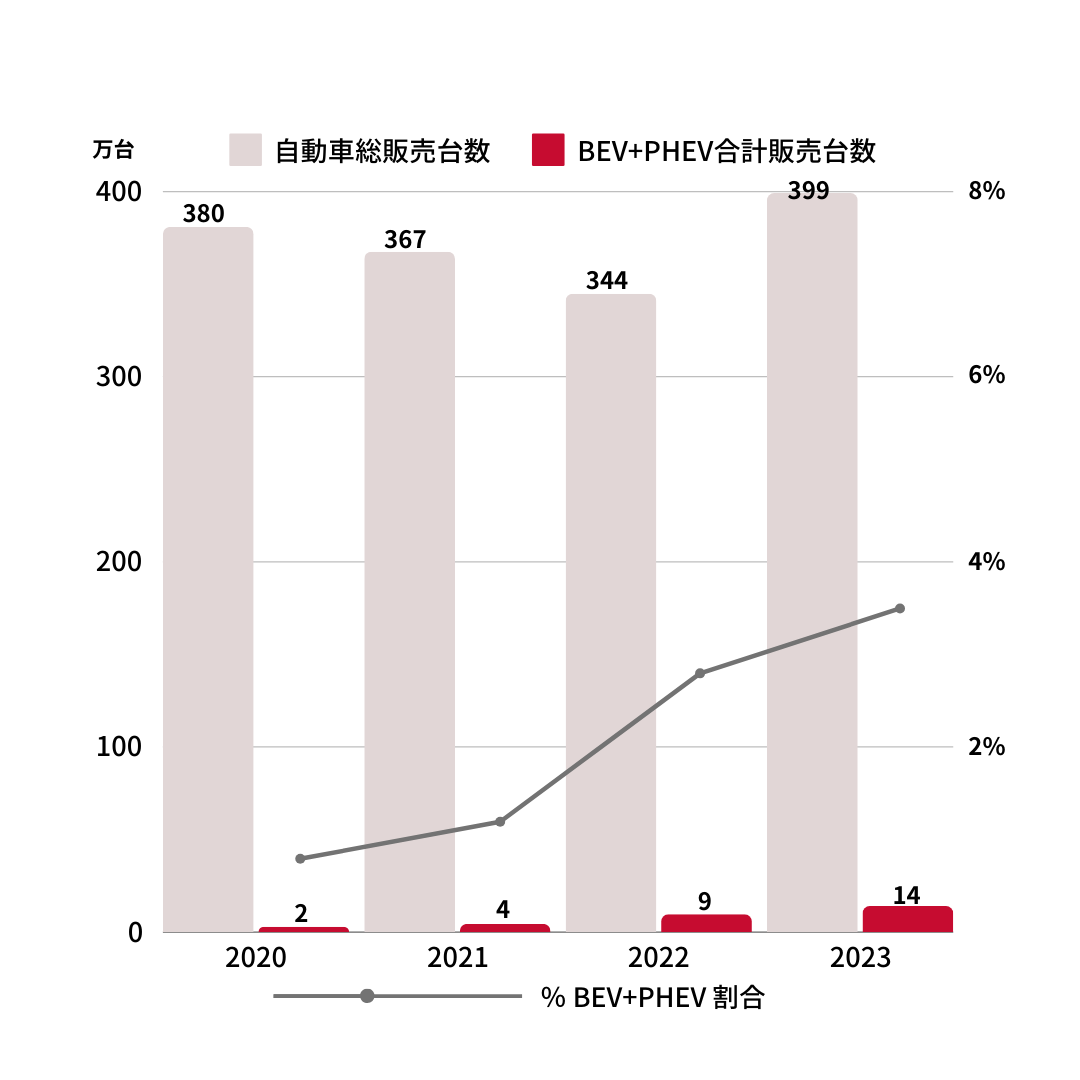
Finally.
In this issue, we have looked at the topic of electric vehicles, from basic knowledge to market trends in various countries around the world, along with the latest data. As each country promotes the spread of electric vehicles, we hope that you have been able to confirm, on a factual basis, the speed at which the automobile industry and the society surrounding it are changing.
However, the situation surrounding the industry is changing very quickly, as both the government and companies are not giving up on development and dissemination. For a better understanding of the industry situation in the future,
- Trends in Manufacturers of Electric Vehicles
- Future changes in the global situation
- What challenges do you see for the further spread of electric vehicles in Japan?
- Movement of suppliers and infrastructure development/mobility service companies dealing with electric vehicle-related
Attention should also be paid to the above topics.
Understanding trends in the automotive industry can be very helpful when considering a career change, especially when researching companies and preparing for interviews. Turnpoint Consulting Turnpoint Consulting, Inc. is an agency specializing in the automotive industry, providing up-to-date and reliable information on the automotive and mobility job market and selection strategies for job seekers, as well as information on the talent flow in the industry for corporate recruiters.
Need help with your job search?
Consultation
- I don't know if there is a job that fits my criteria
- I don't have time to look for jobs.
- I want to start thinking about career planning.
Turnpoint Consulting is a recruitment agency specializing in the automotive and mobility industry. Our industry experts will support you in your career.
Supervisor of this article
Turnpoint Consulting Co.
Turnpoint Media Management Office
Turnpoint Consulting is a specialist recruitment agency for the automotive and mobility industry. Turnpoint Media will provide you with useful information on industry trends and career opportunities.
Related Articles
-
2025.06.21
Job Change x Trend News] Can’t Take My Eyes Off of You! Summary of the latest EV situation
-
2025.06.21
Gigacast is the key to EV manufacturing! Summary of companies introducing Gigacast
-
2025.06.20
Job Change x Trend News] By Manufacturer! Summary of the latest situation of self-driving cabs
Search by Industry
Consultation
Our expert team is dedicated to empowering your career change, crafting tailored career plans, and securing the best job opportunities in the automotive and mobility sectors.
- Top
- Turnpoint Media
- Mobility Industry Trends
- The EV Market from the Basics: Current Trends in the World and Japan





